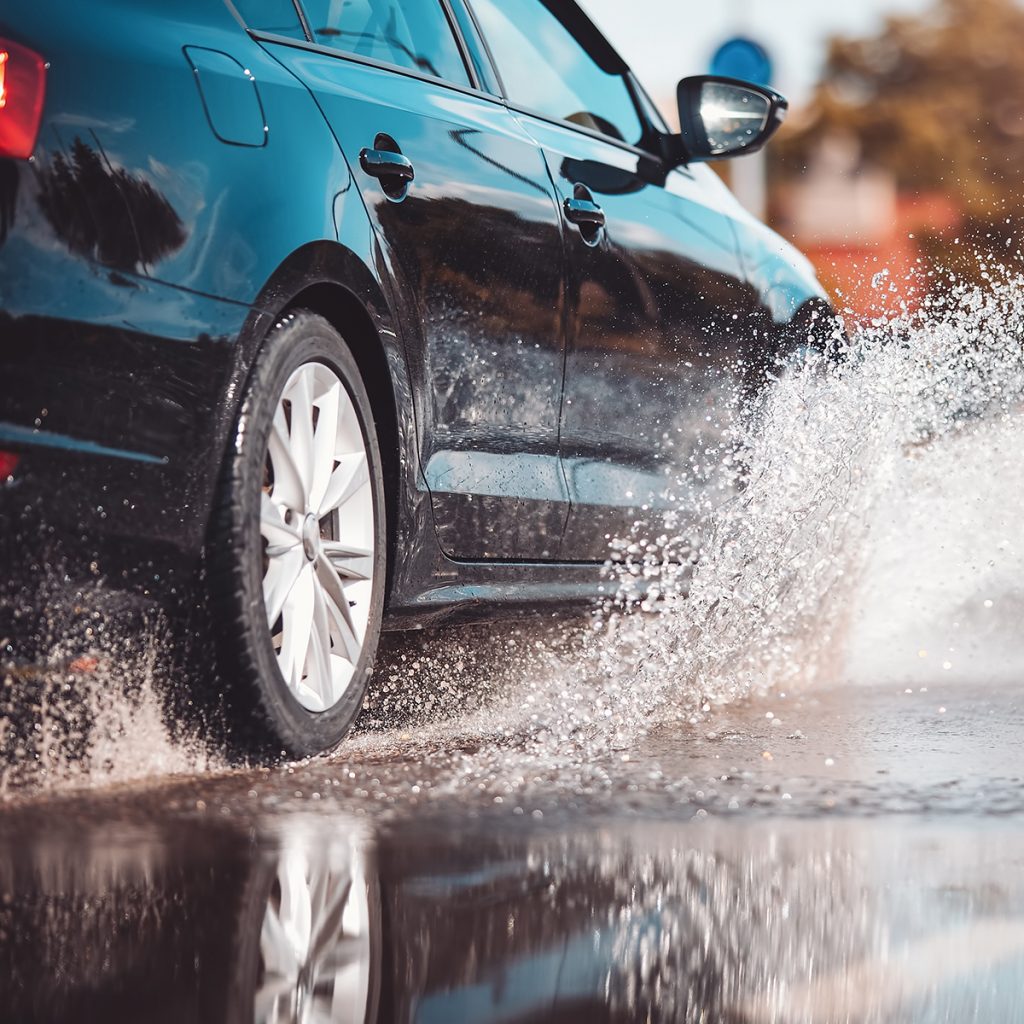
Shower, drizzle, deluge, hail, downpour… Many languages, such as English, have numerous terms with which to refer to rain. There are around one hundred Galician words to designate this atmospheric phenomenon. But this wealth of linguistic resources is not always accompanied by other tools with which to deal with the rain, especially when it is heavy or lasts for a long time. It is then that we suffer flooding, rivers breaking their banks and other incidents that can sometimes be catastrophic.
On the road, rain is often the cause of traffic jams and accidents, although these do not always have to do with the consequences of the weather on the infrastructure, but with the drivers’ behavior. Because, sometimes, rain also causes our minds to fill with clouds that prevent us from acting with the necessary caution. That’s why it doesn’t hurt to remember some of the basic tips for when rain or storms catch us behind the wheel.
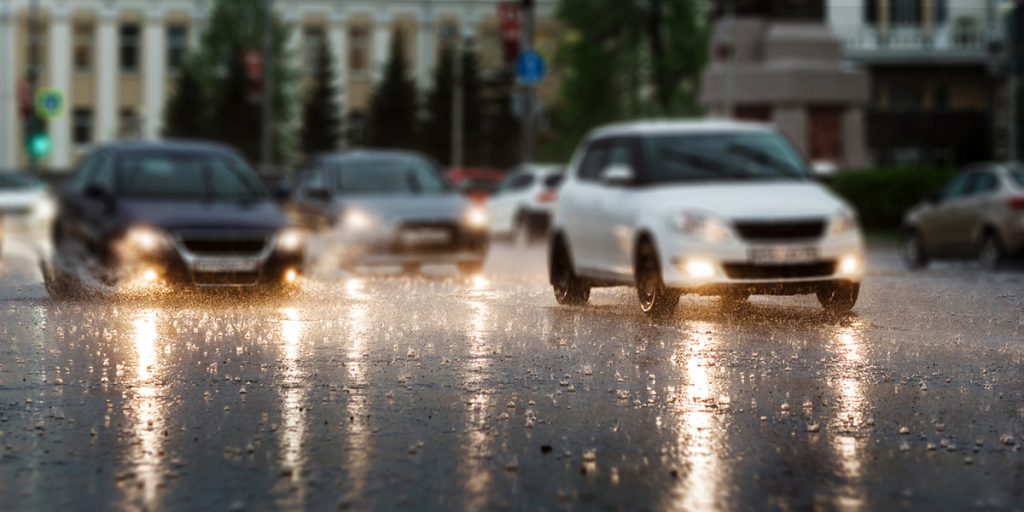
Look out, it’s raining
Being cautious is one of the first things to keep in mind when we encounter a storm. Your driving instructor probably told you that the most dangerous moment is when the first drops fall. They mix with accumulated dust and cause the tires to lose their grip. This moment is crucial because it can even take us off the road, since the braking distance increases.
Aquaplaning is no fun
Yes, tires are very important, especially because they are the only part of your car to be in contact with any surface, and therefore, one of the ones we depend on the most. That is why you must be very aware of the depth of the treads and the pressure indicated by the manufacturer, key factors when it comes to ensuring that the tires grip the pavement and avoiding issues such as aquaplaning. If the latter happens, we must take our foot off the accelerator, lightly and without pressing the brake, letting the car stop little by little.
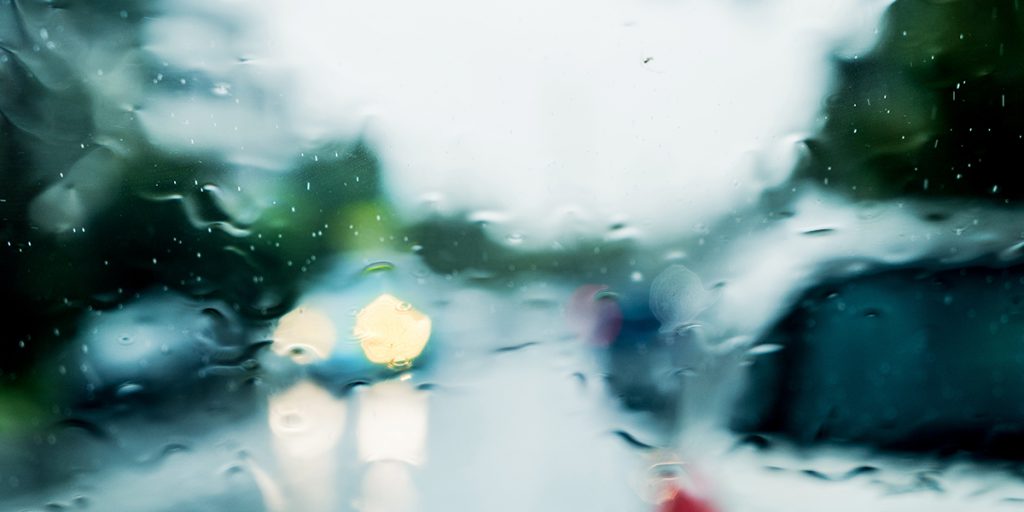
Can’t you see?
A clean windshield, wipers in good condition and air to demist the windows. If your windshield does not meet these requirements, your visibility may be reduced, and that’s a problem. And even if we do meet all these requirements, in the rain we will always have to adapt the speed to the road conditions and increase the distance between us and the car in front.
Lights, tires, action!
Short-range lights are usually enough to help others see you. If the situation is extreme, you can use the fog lights.
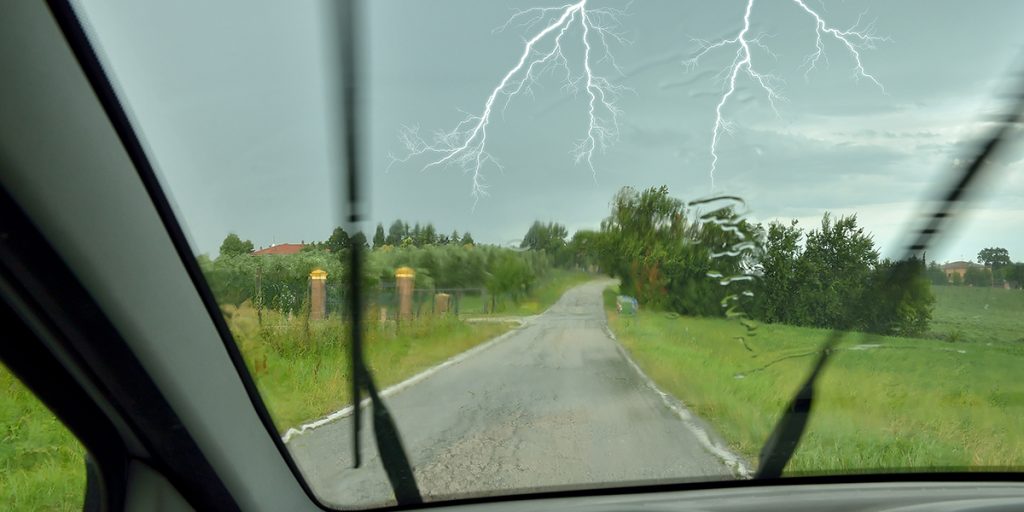
Good heavens!
Have you heard about the Faraday cage? Without going into details, a vehicle can be considered a Faraday cage, i.e., a container that, thanks to the electrically conductive materials with which it is made, protects its interior against the effects of electric fields coming from the outside. In short, if you get caught in a thunderstorm, you will be safe inside the car. However, you should take into account a series of recommendations, such as turning off the radio and staying away from metal fences and power lines to ensure your safety as much as possible.
You can stop
If the rain is heavy, you can stop, as long as you alert other drivers and do it in a safe area. And don’t be shy: turn on the emergency lights, low beam lights and fog lights. Even if you make your car look like a Las Vegas casino!
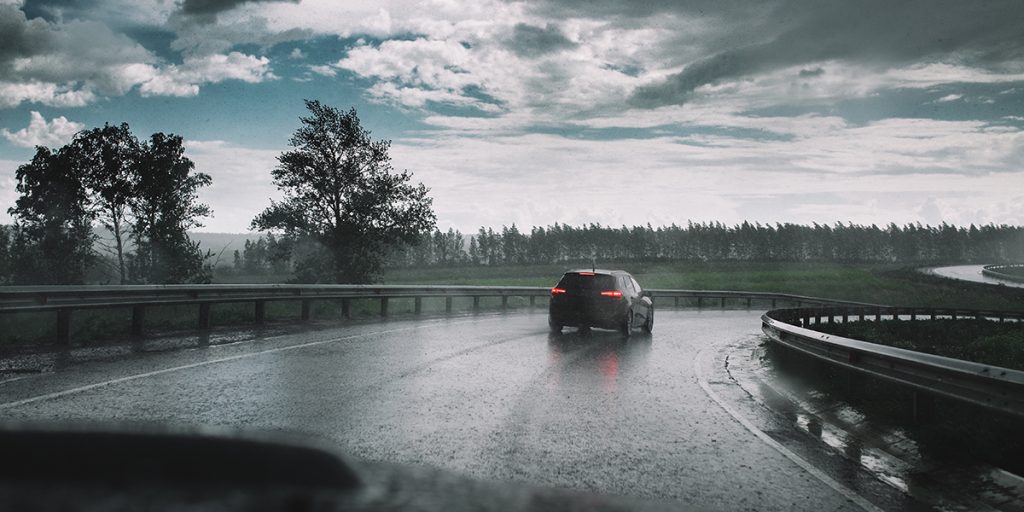
Look at the sky more
That, or check an app or website before getting in the car to check the weather forecast. It can help you plan for adverse situations if there is a downpour during your journey.